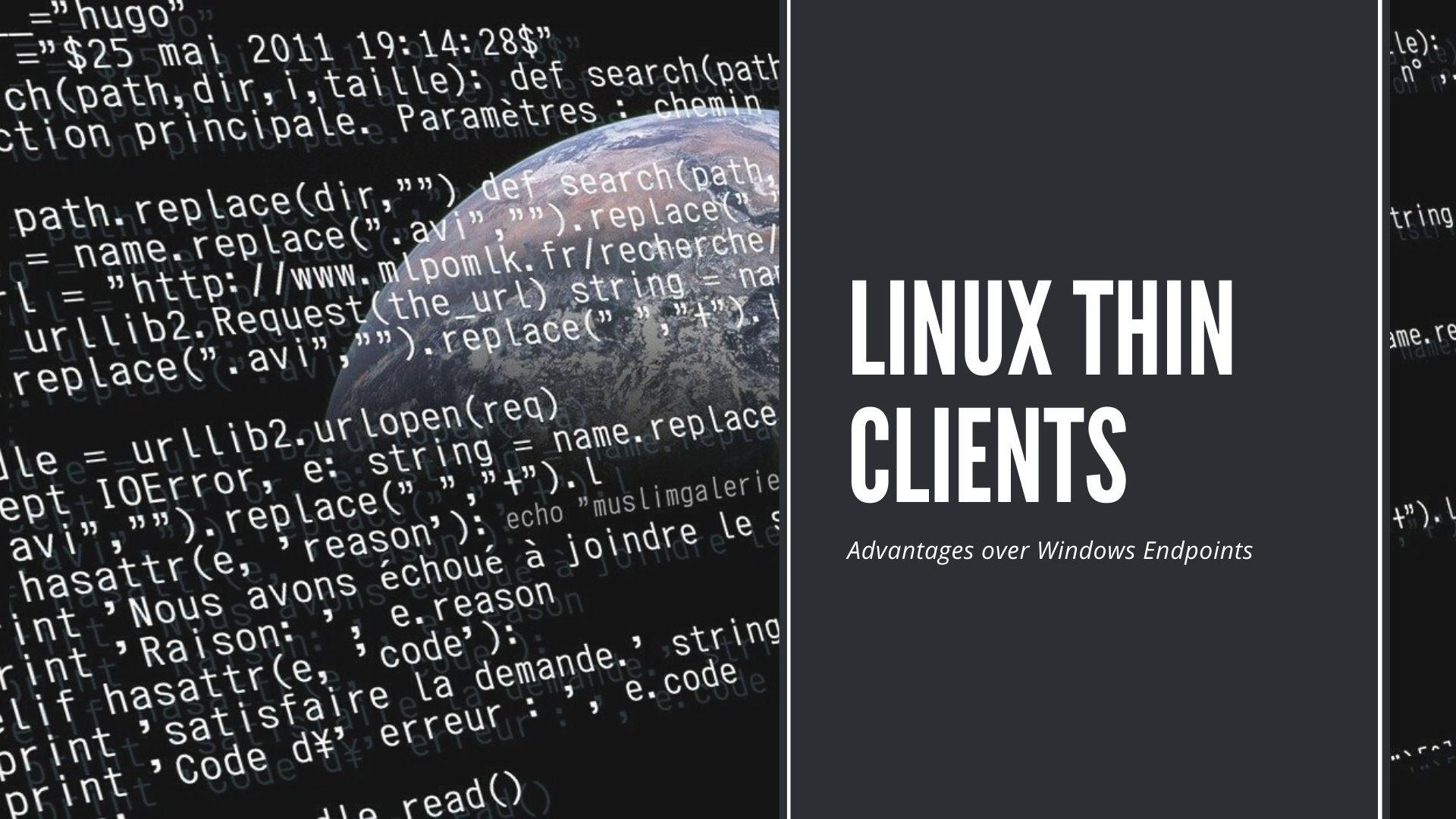The continued popularity of VDI technology has many wondering about the alternatives to Windows based endpoints. What are the alternatives? For many, a Linux Thin Client is the right approach. This is for several reasons. For starters, Windows endpoints create management challenges for organizations. Linux endpoints, on the other hand, create solutions. Secondly, Linux Thin Clients prevent common security exploits. Additionally, important information does not need to be stored on the Linux based endpoint. Lastly, managing Linux Thin Clients is easier than managing Windows endpoints. Thanks to solutions like Stratodesk NoTouch Center, for example, thousands of Linux Thin Clients can be managed from one location.
The Windows Endpoint Nightmare
Housing Windows on endpoints is a problem. Enterprises find that too many resources are directed towards managing and maintaining Windows endpoints. It’s hard, for example, to make sure that every endpoint is running the same version of Windows. What’s more, Windows needs additional malware/virus protection. IT overhead quickly grows as resources are directed to each and every remote endpoint that must be updated manually.
Linux Thin Clients Set a Standard
With Linux based solutions like NoTouch OS, enterprises benefit from a consistent look and feel across every device. Additionally, using Linux saves money. It also absorbs significantly less resources. For example, Linux endpoints need to be updated less, don’t need additional security, and run “thinner” than Windows Thin Clients.
Centralized Management for Linux Thin Clients
Perhaps the defining benefit of using Linux is centralized management. It’s a major differentiator between Linux based solutions and Windows endpoints. Managing Linux endpoints with a tailor-made, Linux endpoint management solution reduces costs, headache and improves your overall secure digital perimeter. Stratodesk NoTouch Center, for example, seamlessly enables IT to manage NoTouch OS based endpoints anywhere in the world from one location.
PC Conversion Made Easy
A massive bonus for Linux based Thin Clients is PC Conversion. With PC Conversion, enterprises no longer need to replace every single device in their network. Instead, IT can deploy a Linux-based OS onto their existing devices, converting them into Linux endpoints. This can save enterprises millions of dollars by extending hardware lifecycles. Stratodesk NoTouch OS is ideal for this kind of use case. It comes complete with the most up-to-date client from all major VDI providers and can be set up and connected to centralized management in a matter of minutes.
When all is said and done, a solid Linux OS is the way of the future. And that future is not limited to just VDI Thin Clients. Truly advanced, Linux-based operating systems, like the one available from Stratodesk, can be deployed on any endpoint device, including IoT devices like the Raspberry Pi. With the right Linux OS, the possibilities are virtually endless.

